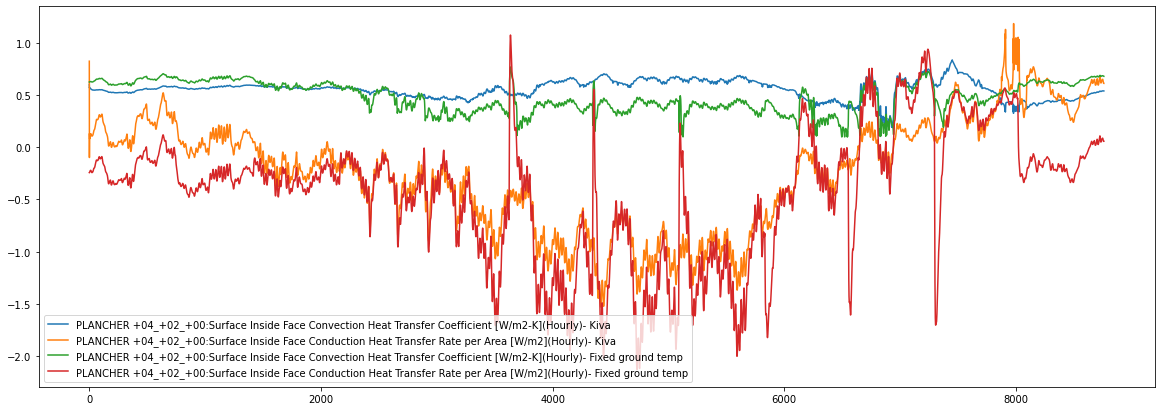I model a single storey building with a big surface (15 744m²) heated to 15°C. The building has the following insulation: floor: 0.24 K.m²W-1; walls: 2.98 K.m²W-1; roof: 6.07K.m².W-1.
I use Kiva foundations with the following parameters:
Foundation:Kiva,
Slab Details, !- Name
15, !- Initial Indoor Air Temperature
, !- Interior Horizontal Insulation Material Name
, !- Interior Horizontal Insulation Depth
, !- Interior Horizontal Insulation Width
, !- Interior Vertical Insulation Material Name
, !- Interior Vertical Insulation Depth
, !- Exterior Horizontal Insulation Material Name
, !- Exterior Horizontal Insulation Depth
, !- Exterior Horizontal Insulation Width
, !- Exterior Vertical Insulation Material Name
, !- Exterior Vertical Insulation Depth
, !- Wall Height Above Grade
, !- Wall Depth Below Slab
; !- Footing Wall Construction Name
Foundation:Kiva:Settings,
1.8, !- Soil Conductivity
3200, !- Soil Density
836, !- Soil Specific Heat
0.9, !- Ground Solar Absorptivity
0.9, !- Ground Thermal Absorptivity
0.03, !- Ground Surface Roughness
40, !- FarField Width
GroundWater, !- DeepGround Boundary Condition
10; !- DeepGround Depth
SurfaceProperty:ExposedFoundationPerimeter,
PLANCHER +00_+00_+00, !- Surface Name
ExposedPerimeterFraction, !- Exposed Perimeter Calculation Method
, !- Total Exposed Perimeter
1, !- Exposed Perimeter Fraction
; !- Surface Segment 1 Exposed
The simulation gives 87MWh of heating over the whole year(ie. 5.4kWh/m²/year).
Secondly, I simulate the same building but with fixed ground temperature with the monthly median of the inside face temperature of the floor of the previous Kiva simulation (taken in the middle of the building). The simulation gives 100 MWh of heating over the whole year(ie. 6.35kWh/m²/year).
I expected the contrary because the second simulation takes the inside face temperature as the ground surface temperature (moreover on the center of the building floor). It seems that the comportement is worse when I use the procedure but with 18°C for the temperature set point.
Details: 192m x 82m (a surface of 15 744m²) with 3 meters of height. The building got 10 x 5 parts (19.2m x 8.2m each).
IDF and EPW:
https://drive.google.com/drive/folders/1EaurIWbC6-qknmFLbSmnPoG6T1axVcD3?usp=sharing





 In the fixed ground temperature IDF there is to material layers for the floor: concrete + Insulation, but in the Kiva IDF I just put one layer with the insulation because the slab is already the concrete layer.
In the fixed ground temperature IDF there is to material layers for the floor: concrete + Insulation, but in the Kiva IDF I just put one layer with the insulation because the slab is already the concrete layer.
